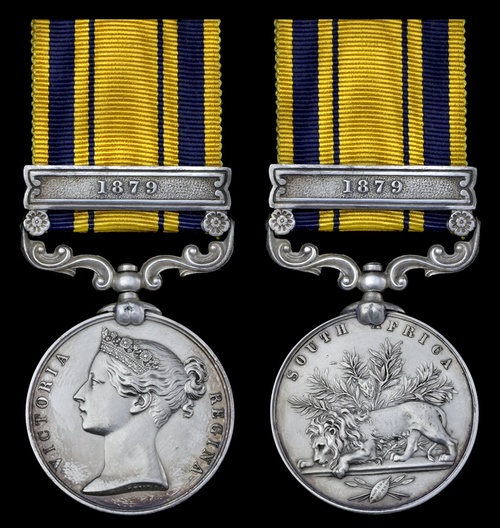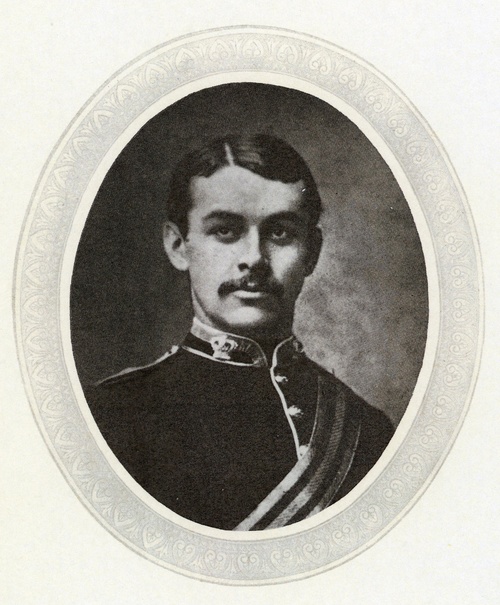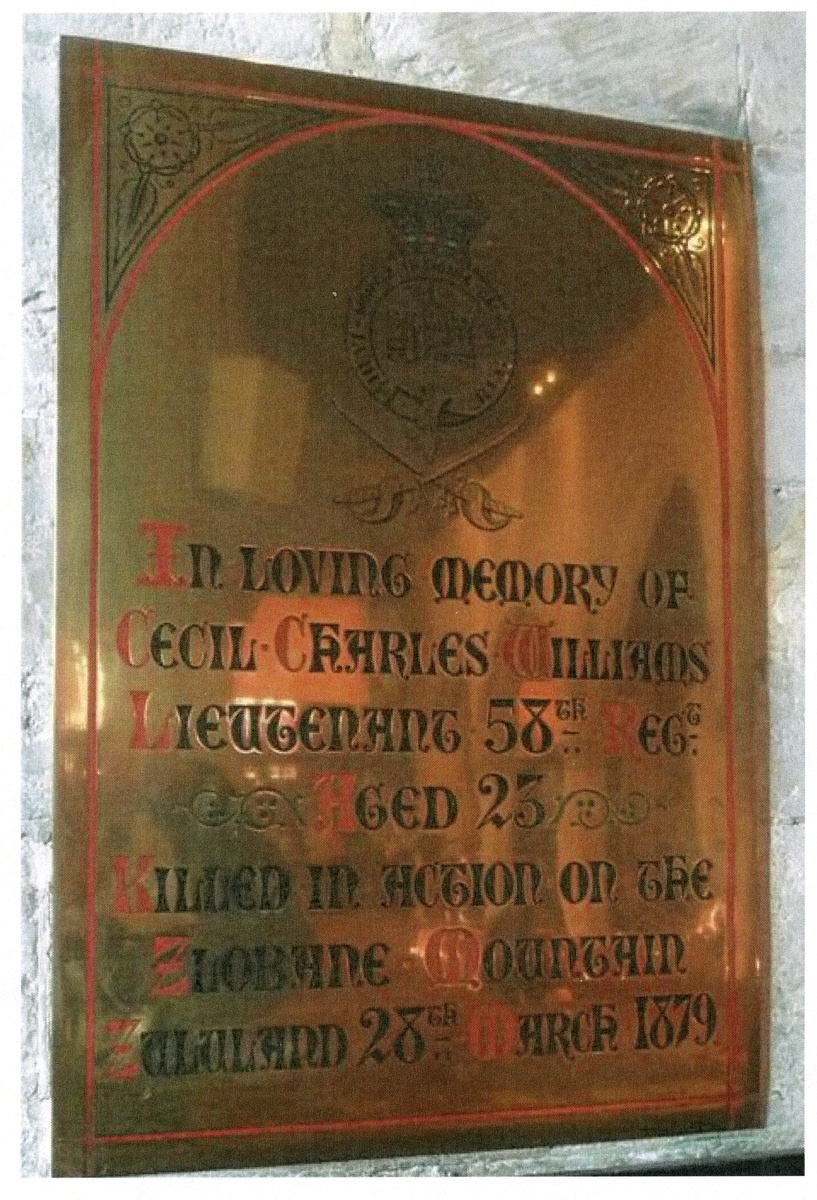Auction: 19002 - Orders, Decorations and Medals
Lot: 31
The poignant and important South Africa Medal awarded to Lieutenant C. C. Williams, 58th Regiment, who was killed in action 'fighting gallantly at the head of his men' at the battle of Zlobane, 22 March 1879
Aged just 23, Williams had led a party of some 250 warriors of Wood's Irregulars in the previous weeks - including the soldiers of loyal Zulu Prince uHamu, brother of King Cetshwayo
His remains were discovered eight weeks later and comprised just his skull, boots and a few bones remaining for internment
South Africa 1877-79, 1 clasp, 1879 (Lieut: C. C. Williams. 58th Foot.), small cut after name, very fine
A unique officer casualty to the 58th (Rutlandshire) Regiment for the Zulu War 1877-79.
Cecil Charles Williams was born on 28 July 1855 at Fallowfield, Lancashire, the son of John Williams, of Didsbury, Manchester. Having been educated at Dr. Brackenbury's Military School, Wimbledon, he was commissioned Lieutenant in the 58th Regiment in August 1873. At this point the unit were based in India, thus he spent some time with the 23rd Regiment, before re-joining his unit when they landed at Portsmouth.
Having passed a course on musketry instruction and having seen the developments in South Africa, Williams found approval to proceed to the region in late 1878. Joining Colonel Wood's Column at Utrecht, he initially served as a Transport Officer.
On 17 January the Column advanced north-east and a laager was made on 20 January at Tinta's Kraal, some 10 miles from the mountain chain which included Zlobane. Following a number of skirmishes, an initial attack was made on 24 January, as the Zulus could be observed to have massed on the mountain. This attack was aborted upon the arrival of news of the disaster at Isandlhwana.
Having moved camp to Kambula, on 7 February, Williams was appointed Staff Officer to Major W. Knox Leet, Commandant of Wood's Irregulars. The Transvaal Rangers, five companies of the 80th Regiment and some German settlers joined the camp. Wood also used the opportunity to recruit local tribesmen - who did not fall under the complete control of King Cetshwayo - to bolster his numbers.
The Irregulars included warriors of Prince uHamu, under the command of a British officer. During early March, and with a Mounted Infantry arm added, they were found to be of excellent use in scouting and skirmishing raids. They came to the attention of Lord Chelmsford, who received the despatch from Colonel Buller on the operations in the Intombi Valley stating:
'Wood's Irregulars fought well, owing much, I think, to the admirable way in which they were led by Major Leet, Lieutenant Williams and Captain Hook.'
Chelmsford heard of the increased strength of the Column and an order for attack on Zlobane soon followed. Wood hoped that by driving cattle and warriors from the mountain, the Zulu army would follow with an attack Kambula, a fight he was sure he would win.
First Zlobane had to be attacked. It was an imposing natural structure of two plateaux, boulder strewn and with the lower steps known as the 'Devils Pass.'
Mackinnon & Shadbolt take up the story:
'Setting out with his corps on the morning of the 27th, Lieutenant Williams marched with it across the Zunguin Hill, where it was joined by a force under Colonel Buller destined to ascend the eastern acclivity of the mountain. With this force the 2nd Battalion of the corps advanced, but Lieutenant Williams, in consequence of his intimate knowledge of the country, was left with the 1st Battalion and Oham's men to act as a guide to a second body, under Lieutenant-Colonel Russell, of the 12th Lancers, shortly expected from Kambula.
This force advanced at daybreak on the 28th, and succeeded in occupying the lower of the two eminences which together form Zlobane Mountain. While Oham's men, who were attached to the Irregulars, were proceeding with a large capture of cattle, in accordance with an order received, towards the Zunguin Neck, their flank was laid open to the attack of an immense body of the enemy.
In the desperate encounter which ensued, Lieutenant Williams, who had volunteered to accompany this party fell fighting gallantly at the head of his men. In an official despatch bearing the date March the 30th, Colonel Wood wrote:
"He evinced on this, as on other occasions, marked courage."
Despite his loss, and the dreadful flank attack which cost the Column heavily, the Zulu impi indeed attacked Kambula the following day. Wood routed them in what was considered the turning battle of the entire war.
A report from Wolf's Hill Camp, on 21 May 1879, published in Natal Mercury News, takes up the story of the eventual discovery and burial of his remains:
'At one of the kraals, between the cattle kraal and the huts, a part of a skeleton consisting of the backbone and ribs, was seen lying and as we proceeded we saw a good many scattered bleached bones and portions of bones. The General [Wood] had brought with the Irregulars a Petty Chief of Oham's who was with Potter and the other officer [Williams] who was killed.
The search for the remains of Lieutenant Williams, of the 58th Regiment, was for some time ineffectual, until the General ordered all the troops and Irregulars to be extended in line to search, when the boots were discovered, with the name inside, and the skull, which was identified by Dr Jolly.
A collection of the bones was made and the remains of Lieutenant Williams and Captain Potter were interred in the same grave, the General reading the burial service very impressively, the troops forming round the grave. The General threw in the first handful of earth, the others following; then the grave was filled in by mounted infantry.'
15 officers and 110 men were killed at Zlobane on 28 March 1879. No less than 5 Victoria Crosses were awarded, including Colonel Redvers Henry Buller (later General, G.C.B., G.C.M.G.). Williams is commemorated by a large brass plaque at St. Mary Magdalene, Reigate, Surrey; sold with copied research.
Subject to 20% VAT on Buyer’s Premium. For more information please view Terms and Conditions for Buyers.
Sold for
£12,000
Starting price
£4800









